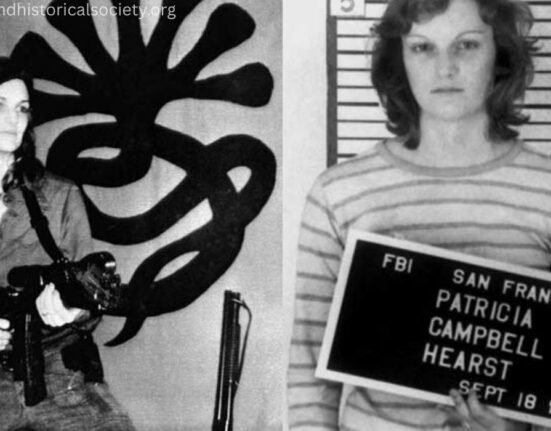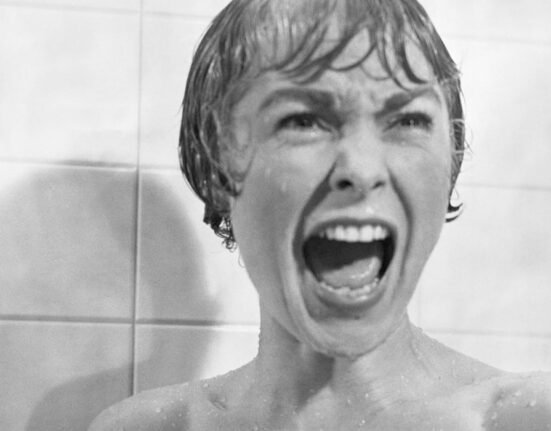“This is the city. The city of Se7en. It’s a place of sin, and I want to be its purifying hand.”
What would you do if you found yourself confronted with a murderer whose crimes are based on the seven deadly sins? Directed by David Fincher, Se7en is a dark, intense psychological thriller that puts you in the center of a morally corrupted world where human nature, justice, and probity are under the ultimate scrutiny. As two detectives pursue a mysterious and chilling murderer, every step toward truth compels them and the viewers as they encounter gruesome clues and a more terrifying pattern, taking them deeper into a world of corruption and desolation. With its spine-chilling mystery trail and unrelenting tension, Se7en is a thriller that’s more than just a one-trick pony; it’s a disturbing investigation of what exactly lurks beneath the surface of society’s most fundamental morals. Curious? You should be.
John Doe: An Architect of God’s Wrath Wrapped in Flesh
John Doe: Don’t ask me to pity those people. I don’t mourn them any more than I do the thousands that died at Sodom and Gomorrah.
William Somerset: Is that to say, John, that what you were doing was God’s good work?
John Doe: The Lord works in mysterious ways.

John Doe is an enigma, full of contradictions. His personality lurks in the shadows, far from the limelight and detached from any illusion of the social world. He has an aura of coldness, an iciness that touches on the verge of being horror. His temperament is calculating and methodical; each word and move is carefully weighed with unnerving precision. But beneath, a disturbing undertow of intelligence—keen, precise, and razor-sharp. His mind is wrapped up in an almost impenetrable shell, evasive and elusive.
His thoughts are a maze of closely guarded secrets; the closer one comes to him, the more he repels them. John Doe is a master of self-containment. His character is complex to decipher and even harder to control.
In the course of the film, he commits a series of systematic, premeditated killings as part of his “Seven Deadly Sins” objective. These killings are methodical and deliberately infringe upon legal standards. He does not seem to be acting out of a response to an immediate danger or urge, but rather one of magnificent, distorted moral principles. John Doe tricks the police into believing they are conducting a regular investigation process, stringing them along with clues. The deception of detectives Mills and Somerset, taking them on a scavenger hunt for murders, demonstrates that deception is an integral part of his actions. Although he does not employ an alias in a traditional sense, he uses the cover of righteousness to deceive others and dominate the investigation.

John Doe’s ASPD
Though the actions of John Doe seem systematic and deliberate, his conduct indicates callousness regarding others’ lives and the consequences that may ensue. His methodical manner of committing the murders shows careful planning. This clearly indicates that impulsivity, as traditionally understood, is not characteristic of his disorder. Instead, he shows indifference to others’ misery and a complete disregard for the societal impact of his actions. These traits are symptomatic of ASPD, though they do not come with the impulsivity or lack of planning seen in other cases.
John Doe always shows wanton disregard for the safety of others. His systematic method of murder shows a profound disregard for human life and safety, as seen in the case of the “sloth” victim, whom he left alive in a catatonic state for a long time. Furthermore, he shows no concern for his safety, deliberately provoking the police and ultimately surrendering. He trades the outcome of his actions for the “final sin” he believes will fulfill his mission.
John Doe’s life is one of absolute disregard for societal obligations. He seems not to care about holding conventional jobs or relationships. His only passion is delivering judgment. He has no concern for his well-being, employment, or any form of traditional social interaction. One of the fundamental traits of ASPD is that the individual never shows remorse, and John Doe is the embodiment of this definition. He does not feel any guilt or remorse for the pain his killings bring. Indeed, his motivation is one of moral superiority—he believes he is punishing the world for its moral decline. His absence of remorse is reflected in the way he speaks so calmly and almost clinically about his killings to the detectives, expressing no sympathy for his victims or their loved ones.
What shaped John Doe’s personality?
“I didn’t do it to be merciful.”
Considering the behaviors exhibited in Se7en, it is possible to speculate that the Antisocial Personality Disorder (ASPD) of John Doe was born out of both early childhood trauma and distorted cognitive patterns. Although there is no immediate information about his childhood from the movie, here are a few hints about his severely troubled early environment:
John Doe’s detached and calculated personality suggests that he has never established normal, empathetic relationships. He commits violence not out of personal motive but for what he believes is a greater moral cause, showing no regard for his victims or their families. His conviction that he is carrying out divine judgment upon the world in the form of the Seven Deadly Sins implies a moral absolutism that usually goes hand in hand with ASPD. The ASPD individual can construct an illusory world in which their destructive acts are justified, and John Doe feels he is cleansing the world of sin. His justification and absence of remorse are consistent with the thought process of an individual with ASPD, where egoistic gain or superiority is considered over empathy.
John Doe appears fixated on a distorted moral absolutism—he views the world in black and white, right and wrong. This black-and-white thinking is typical of people with ASPD, who tend to have narcissistic tendencies, feeling they have a special mission. His fixation on the Seven Deadly Sins reflects a cognitive distortion. He justifies his actions as those of a punisher of “evil,” despite his own extreme cruelty. This may imply a psychological process in which John Doe justifies his actions as being for the good of all, demonstrating how those with ASPD tend to create self-serving rationalizations of their destructive behaviors.
David Fincher’s admirable work through his cinematography
Fincher pulls the audience into John Doe’s moral decay and emotional detachment. He transforms him into more than just a criminal—an almost philosophical figure whose actions are disturbingly calculated and chillingly detached. Fundamentally, Fincher’s visual narration transforms the movie into a study of psychopathy presented through a masterfully engineered psychological thriller.

Cinematography is used as a key to reflecting on the psychological isolation of John Doe and enhancing horror at the situation.Each frame of the film is designed to highlight his control over others, especially Mills and Somerset. It also graphically illustrates his emotional emptiness and lack of remorse—key traits of Antisocial Personality Disorder. Fincher often uses close-ups of John Doe’s face or his artwork, emphasizing his secretive nature. Someone with ASPD typically hides in plain sight, blending into society while secretly engaging in destructive, antisocial behaviors.
Colors and Lighting
The film’s color palette, which comprises mainly muted tones, blacks, and browns, produces a dreary, unsettling ambiance that mirrors the moral degradation that John Doe observes in the world. The rain-soaked, fog-filled city reflects John Doe’s distorted view of a world consumed by sin. The absence of bright colors induces a feeling of emotional numbness, similar to the detachment exhibited by ASPD, where life and death are cold and mechanical. This lack of warmth or definition visually conveys the moral and emotional content that characterizes John Doe’s behavior.
Fincher frequently employs low-key lighting, with most of the scene in shadow, increasing the suspense and mystery. This visual method adds stress to the psychological darkness of the narrative. When John Doe appears in shadows or uncertain times, it reflects his mind’s murkiness—his inability to empathize, his concealed motives, and the clandestine character of his crimes. The shadows do not serve any stylistic end; they directly represent his unseen motives, showing how his true character stays hidden from the world and the detectives.
Conclusion
It’s highly recommended for crime drama aficionados who enjoy the unfolding of a murder investigation, which is more than merely resolving a case. The psychological game between the killers and detectives brings some emotional complexity over and above that of the regular crime genre. Also, if you enjoy movies that defy traditional notions of good and evil and are willing to accept morally complex characters, Se7en will appeal to you.
References +
- Browning, M. (2010). David Fincher: films that scar. Choice Reviews Online, 48(04), 48–1959. https://doi.org/10.5860/choice.48-1959
- Hart, S. D., & Hare, R. D. (1996). Psychopathy and antisocial personality disorder. Current Opinion in Psychiatry, 9(2), 129–132. https://doi.org/10.1097/00001504-199603000-00007













Leave feedback about this